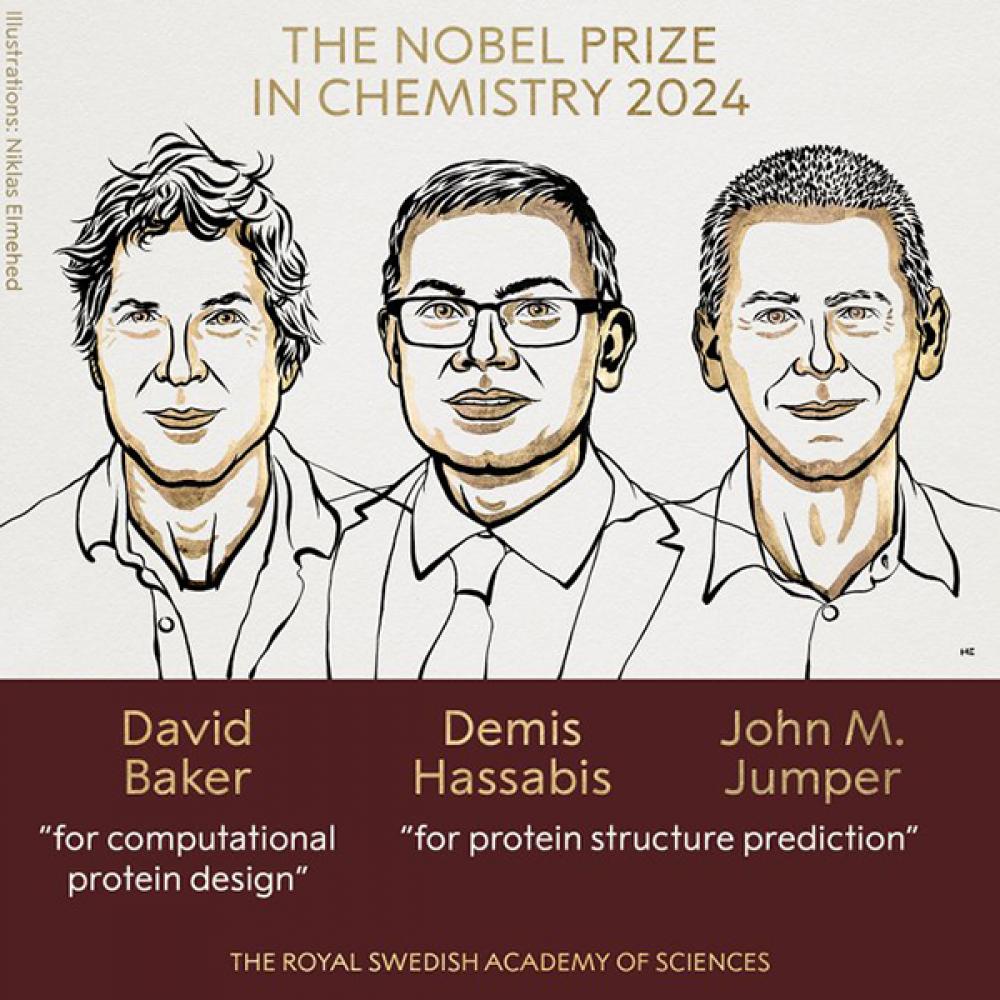Just Earth News | @justearthnews | 09 Oct 2024, 07:15 am Print

Three scientists win Nobel Prize in Chemistry. Photo Courtesy: The Nobel Prize X page
U.S. scientists David Baker and John Jumper and Britain’s Demis Hassabis have been awarded the Nobel Prize in Chemistry for cracking the code for proteins’ amazing structures.
David Baker has succeeded with the almost impossible feat of building entirely new kinds of proteins.
Demis Hassabis and John Jumper have developed an AI model to solve a 50-year-old problem: predicting proteins’ complex structures.
These discoveries hold enormous potential, read a statement issued by the Nobel Prize Award giving body.
The diversity of life testifies to proteins’ amazing capacity as chemical tools. They control and drive all the chemical reactions that together are the basis of life. Proteins also function as hormones, signal substances, antibodies and the building blocks of different tissues.
“One of the discoveries being recognised this year concerns the construction of spectacular proteins. The other is about fulfilling a 50-year-old dream: predicting protein structures from their amino acid sequences. Both of these discoveries open up vast possibilities,” says Heiner Linke, Chair of the Nobel Committee for Chemistry.
Proteins generally consist of 20 different amino acids, which can be described as life’s building blocks. In 2003, David Baker succeeded in using these blocks to design a new protein that was unlike any other protein.
Since then, his research group has produced one imaginative protein creation after another, including proteins that can be used as pharmaceuticals, vaccines, nanomaterials and tiny sensors.
The second discovery concerns the prediction of protein structures. In proteins, amino acids are linked together in long strings that fold up to make a three-dimensional structure, which is decisive for the protein’s function.
Since the 1970s, researchers had tried to predict protein structures from amino acid sequences, but this was notoriously difficult. However, four years ago, there was a stunning breakthrough.
In 2020, Demis Hassabis and John Jumper presented an AI model called AlphaFold2.
With its help, they have been able to predict the structure of virtually all the 200 million proteins that researchers have identified.
Since their breakthrough, AlphaFold2 has been used by more than two million people from 190 countries.
Among a myriad of scientific applications, researchers can now better understand antibiotic resistance and create images of enzymes that can decompose plastic.
- India’s West Coast Turns Protector: Whale Shark Rescues Surge from Gujarat to Kerala
- Belém COP30 announces major climate finance boost
- Three dead after magnitude 5.7 earthquake hits Bangladesh, strong tremors felt in Kolkata
- Chaos at COP30: Pavilion blaze leaves 13 injured amid global climate summit
- As extreme weather intensifies, refugee camps may struggle to remain habitable by 2050: Reports



-1763561110.jpg)


